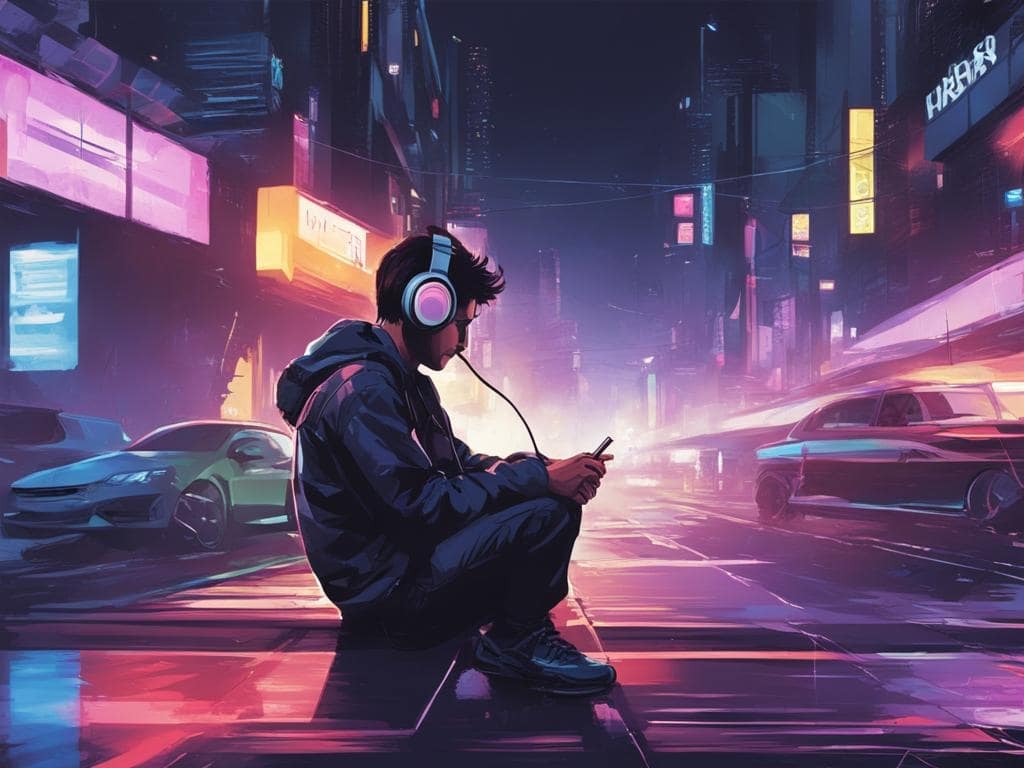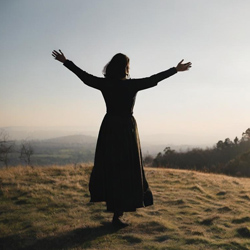Maybe you haven’t heard of Hyperpop yet, but it’s taking over the internet. This genre of music came out of nowhere and has exploded onto the scene. Chances are, you’ve heard a Hyperpop song in the background of a TikTok or YouTube video and didn’t even realize it.
Hyperpop is bold, experimental, and unapologetically weird. It mashes together electronic sounds, autotune, glitchy beats, and catchy melodies. The result is music that’s playful, chaotic, and downright addictive.
Love it or hate it, Hyperpop is shaping up to be the sound of Generation Z. In just a few short years, it’s disrupted the music industry and given a platform to young, innovative artists around the world. This genre may have materialized out of thin air, but it’s here to stay.
The Origins of Hyperpop
Hyperpop emerged in the mid-2010s, rising out of an internet-based music scene. The genre is characterized by a maximalist, chaotic, and futuristic sound that brings together elements of pop, hip hop, electronic, and experimental music.
- The origins of hyperpop can be traced to the lo-fi hip hop scene on SoundCloud. Early hyperpop artists like A.G. Cook, Danny L Harle, and POBBLES were part of the PC Music collective, experimenting with eccentric pop production and vocals.
- As social media grew, hyperpop spread through platforms like YouTube, TikTok, and Bandcamp. Songs went viral, gaining millions of plays and spawning dance crazes and memes. Hits like “Money Machine” by 100 Gecs and “Lalala” by Y2K and bbno$ brought the genre into the mainstream.
- The DIY, internet-centric nature of hyperpop allowed artists to push creative boundaries. Glitchy beats, chaotic song structures, ironic lyrics, and exaggerated vocals became hallmarks of the genre. While the music can seem abrasive at first, there’s an undeniable playfulness and fun to it.
- Now, hyperpop is influencing pop music at large. Its futuristic, post-genre sound can be heard in hits like “Say So” by Doja Cat and “ positions” by Ariana Grande. At the same time, hyperpop continues to thrive as an underground scene, with new songs going viral on TikTok every day and a vibrant community of fans and creators shaping its evolution.
Paving The Way: Early Hyperpop Pioneers
Hyperpop didn’t come out of nowhere overnight. Like any genre, it evolved over time, with various artists paving the way.
In the early 2000s, artists like Sophie and A. G. Cook started experimenting with pop sounds, faster tempos, and autotune. Sophie released her first single, “Nothing More to Say” in 2013, helping to define the hyperpop sound. Her music pushed pop to the extreme with high-pitched vocals, energetic synths, and a futuristic feeling.
100 Gecs
Around 2015, 100 gecs emerged, taking hyperpop to new heights. Their experimental style combines pop, electronic, and alternative genres in unique ways. Their debut album “1000 gecs” became a viral hit, exposing many to the world of hyperpop. Songs like “Money Machine” and “Stupid Horse” feature autotuned vocals, glitchy beats, and quirky lyrics.
- 100 gecs’ nostalgic references to 2000s pop culture in their lyrics and style resonated with Gen Z.
- Their DIY approach to making music at home inspired many up-and-coming hyperpop artists.
Other pioneers like Charli XCX, Dorian Electra, and Slayyyter have also shaped hyperpop with their innovative sounds and style. While hyperpop started as an underground genre, its rapid rise in popularity shows that pop music is always evolving. Pioneering artists build on pop conventions of the past to create the pop sounds of the future.
How TikTok Launched Hyperpop Into The Spotlight
Hyperpop’s mainstream breakthrough came with the rise of TikTok. The short-form video app became fertile ground for hyperpop artists to gain exposure. Songs like 100 gecs’ “money machine” and Slayyyter’s “Mine” went viral on TikTok, exposing the genre to new audiences.
TikTok’s format is perfect for the chaotic, absurdist nature of hyperpop. Songs with loud, maximalist production, unintelligible lyrics, and jarring genre fusions are ideal for TikTok’s clips. The app’s algorithm also boosts trendy songs by promoting popular sounds, dances, and effects. This allowed hyperpop tracks to spread like wildfire and introduced listeners outside the genre’s niche circles.
Many hyperpop artists capitalized on their TikTok success. 100 gecs’ 2019 album 1000 gecs received widespread acclaim and landed on multiple year-end lists. More broadly, TikTok pushed experimental pop and PC music into mainstream conversations. The app’s influence on popular music is undeniable, and its boost to hyperpop demonstrates how new platforms can propel underground genres to widespread audiences.
TikTok continues to be an important platform for hyperpop artists. New tracks frequently go viral, and trending sounds tap into the genre’s manic energy. At the same time, hyperpop’s mainstream breakthrough has led to more commercial opportunities. 100 gecs signed with Atlantic Records, and Slayyyter collaborated with Ayesha Erotica and Big Freedia. Hyperpop’s chaotic spirit remains, but its audience and ambition continue to grow thanks to TikTok. The genre came out of nowhere, but it’s taking over everywhere.
What Makes This Genre Unique?
Hyperpop is a genre that’s hard to pin down, but you know it when you hear it. The hyperpop sound is characterized by a maximalist, futuristic, and experimental production style. Unlike most pop music, hyperpop songs have an intentionally chaotic and glitchy sound with layers of electronic noises, rapid tempo changes, and heavy autotune.
Hyperpop artists embrace digital production techniques and aren’t afraid to manipulate vocals or completely distort sounds. The end result is a musical experience that’s vibrant, upbeat, and almost psychedelic.
Some hallmarks of the hyperpop genre include:
- Heavy use of autotune and vocal manipulation. Hyperpop vocals are often pitched up, layered or distorted beyond recognition.
- Glitchy, futuristic beats. Hyperpop tracks incorporate electronic drums, glitchy synths and retro arcade sounds to create an experimental soundscape.
- Maximalist production. Hyperpop songs are dense, chaotic and filled with an overwhelming number of sounds, samples and tempo changes. Nothing is stripped down or minimal.
- Irony and internet culture. Hyperpop lyrics and esthetics are heavily influenced by internet slang, emoji, viral memes and online absurdity. The genre doesn’t take itself too seriously.
- Cross-genre experimentation. Hyperpop pulls from a wide range of genres like electronic, dance, synth-pop, hip hop, emo rap and more. Artists frequently collaborate across genres, fusing different styles.
The Future of Hyperpop
Hyperpop is an internet-born genre, so it makes sense that much of its future will be shaped online. As streaming and sharing continue to dominate how we consume music, hyperpop artists have more opportunities to reach new listeners.
TikTok And YouTube
Short-form video platforms like TikTok and YouTube have been crucial in spreading hyperpop to new audiences. Songs go viral on TikTok, exposing the genre to millions of users. Artists also frequently promote their music through YouTube, whether it’s music videos, vlogs, or behind-the-scenes footage. These platforms have been key drivers of hyperpop’s growth so far, and will likely shape its future.
Collaboration And Crossover
Hyperpop thrives on collaboration, mashups and genre-bending. We’ll probably see more team-ups between hyperpop artists, as well as crossovers into adjacent genres like electronic, hip hop and pop. Some potential collaborations include 100 Gecs and Charli XCX, Dorian Electra and SOPHIE, or A. G. Cook with popular hip hop or pop artists. These cross-genre collaborations could bring hyperpop to massive new audiences.
The Next Generation
A new wave of hyperpop artists are starting to gain traction, influenced by pioneers like 100 Gecs, Dorian Electra and A. G. Cook. Artists like ericdoa, Glaive, aldn, and midwxst are making a name for themselves with a blend of hyperpop, emo rap, and bedroom pop. The hyperpop “sound” continues to evolve, and these up-and-coming artists could take the genre in exciting new directions.








